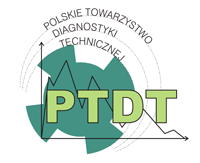Tricopter Vibration Analysis
1
Armed Forces Academy of gen. M.R. Štefánik
Submission date: 2021-05-19
Final revision date: 2021-08-09
Acceptance date: 2021-08-16
Online publication date: 2021-08-19
Publication date: 2021-08-19
Diagnostyka 2021;22(3):67-72
KEYWORDS
TOPICS
ABSTRACT
Unmanned Aerial Vehicle (UAV) is exposed to various types of stress during flight. One of the most significant negative influences is the vibrations produced by the rotating parts. If we assume a UAV of the multicopter type, it is a stress of the whole structure by vibrations produced by propulsion units, which are placed on symmetrically distributed arms. The propulsion unit consists of an electric-propeller assembly, with the propeller being the largest source of vibration. This is due to the uneven distribution of the mass with respect to its axis of rotation. In addition to the propeller, the rotating part is also the electric motor itself, although the electric motor contributes much less to the total vibrations than the propeller. For this reason, it is necessary to balance the propeller first statically and then dynamically balance the entire drive unit (engine + propeller). Our work is focused on vibration diagnostics of an experimental tricopter in order to optimize the power units - to produce the smallest possible vibrations.
REFERENCES (13)
1.
Bottega, J. William. Engineering Vibrations. Boca Raton: Taylor & Francis Group, LLC. 2006.
2.
Kelly S. Graham. Schaum’s outline of theory and problems of mechanical vibrations. USA: The McGraw-Hill Companies, Inc. 1996.
4.
Kelly S. Graham. Mechanical Vibrations: Theory and Applications, Cengage Learnin. 2012.
5.
Belal H. Sababha, Hamzeh M. Al Zu'bi, Osamah A. Rawashdeh. A rotor-tilt-free tricopter UAV: design, modelling, and stability control. Int. J. Mechatronics and Automation. 2015;5(2-3). https://doi.org/10.1504/IJMA.2....
6.
Mahony R, Kumar V, Corke P. Multirotor aerial vehicles. IEEE Robotics and Automation Magazine. 2012;19(3):20-32. https://doi.org/10.1109/MRA.20....
7.
Mac Camhaoil M. Static and dynamic balancing of rigid rotors. Bruel&Kjaer application notes BO 0276-12. 2016:1-20.
9.
Wilcocx E. Vibration analysis in turbomachinery. 45th Turbomachinery & 32nd Pump Symposia, Houston, Texas. 2016.
10.
Adams L. Maurice. Rotating machinery vibration. Case Western Reserve University. Cleveland, Ohio. 2001.
11.
Kammler D. A first course in fourier analysis. Cambridge University Press, New York. 2007.
12.
Chu Eleanor. Discrete and continuous fourier transforms analysis. Applications and Fast Algorithms. Taylor&Francis. 2019.
13.
Vance J, Zeidan F, Murphy B. Machinery vibration and rotordynamics. Hoboken: John Wiley and Sons. 2010.
Share
RELATED ARTICLE
We process personal data collected when visiting the website. The function of obtaining information about users and their behavior is carried out by voluntarily entered information in forms and saving cookies in end devices. Data, including cookies, are used to provide services, improve the user experience and to analyze the traffic in accordance with the Privacy policy. Data are also collected and processed by Google Analytics tool (more).
You can change cookies settings in your browser. Restricted use of cookies in the browser configuration may affect some functionalities of the website.
You can change cookies settings in your browser. Restricted use of cookies in the browser configuration may affect some functionalities of the website.


